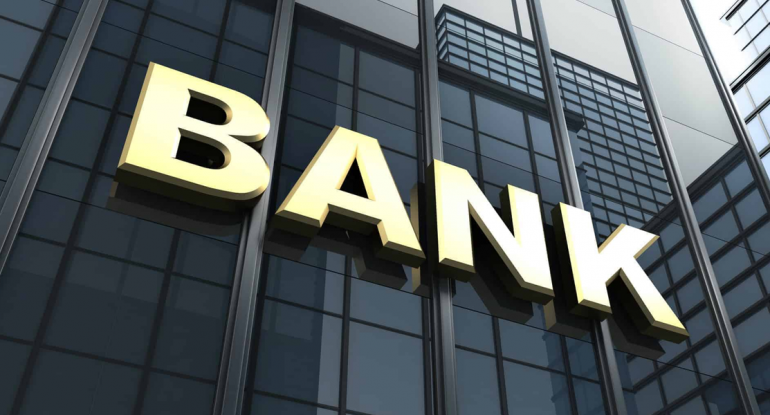Central bank main functions

In all countries they have their own central banks, but what do central bank main functions?
The main function of the central bank is to act as an independent institution of credit machines to maintain price stability in a country.
It regulates credit and currency volumes, prints more money when the market runs out of cash, and pumps money when there is excess credit.
The central bank has the authority to make monetary policy, regulate banks, conduct economic research, and provide financial services. The central bank also plays a role in maintaining currency stability, keeping unemployment low, and prevent inflation.
Below are some of the central bank main functions summary in this article.
Start trade with TenkoFX broker.
The old forex Brokers with positive feedback of reviews from users and are regulated by IFSC BelizeOpen an account or try Demo account.
First, central bank main function is Issue currency
The central bank becomes the sole monopoly in issuing and printing currencies. With the goal of securing control over the volume of currency and credit.
Printing money from the central bank is legal money that is legal by the government of a country. And as a legal instrument of payment.
But the central bank is also not arbitrary in printing money, there is a rule that printed money has gold reserves as a guarantee. The problem-record system differs from country to country.
The central bank is authorized by the government to become an exclusive monopoly of the memorandum. For the sake of uniformity, better control, elasticity, supervision, and simplicity. This will also avoid the possibility of over-issue by each bank.
The second function, Become a Banker, Agent, and Advisor to the Government
The central bank, in all countries, carries out the functions of bankers, agents, and advisers to the government. The central bank makes and receives payments on behalf of the government, meaning the central bank as a banker to the government.
Propose short-term loans to the government to overcome difficulties. Manage public debt on behalf of the government, create accounts, and government banking balances after withdrawing or sending money.
The central bank advises the government on all monetary and economic issues. It also acts as an agent for governments where general exchange controls apply.
The government can borrow money from the central bank using security that will be paid later.
The third function, as Custodian of Cash Reserves
The central bank holds a portion of the balance that belongs to commercial banks due to convention or legal of law. A portion of this balance belongs to commercial banks for clearing purposes.
Other member banks seek guidance, assistance, and direction when needed. Centralized cash reserves at the central bank are a great source of strength for the banking systems of all countries.
Centralized cash reserves can serve as the basis of a large and more elastic credit structure that will be different if the same amount is spread across each bank.
Obviously, when bank reserves are collected in one institution with the responsibility of protecting national economic interests. These reserves will be maximized and in the most effective way during a financial crisis or general emergency.
With the centralization of cash reserves is much more conducive for the economy in its use and to improve the elasticity and liquidity of the banking system and overall credit structure.
The fourth function, as Custodian of Foreign Balances
All central banks will have gold reserves and this works if a policy is needed when the value of the currency needs to be stabilized.
The central bank will keep gold and foreign currencies as reserve records and also meet adverse payment balances from other countries.
One of the functions of the central bank is to maintain the exchange rate set by the government and manage exchange rate controls and other restrictions imposed by the state.
Accordingly, the central bank acts as a custodian of international reserves of the country’s foreign balance.
The fifth function, as Lender of Last Resort
The central bank is the last resort lender, to member banks if this is needed.
By positioning their cash reserves by discrediting first-class bills if there is a growing crisis or panic.
Member banks can also make advances in short-term securities to increase their cash resources in a short time with the approval of the central bank.
This facility converts their assets into cash in a short time. And it is beneficial for them to promote the banking economy and the credit system, elasticity, and liquidity
The sixth function, as Clearing House
The central bank also functions as a clearinghouse, where it will be able to resolve interbank commercial problems related to finance.
A clearinghouse is a place for mutual bank claims for settlement by payment of differences.
The central bank becomes a banker at the bank to maintain the cash balance of commercial banks so that it is easier for member banks to adjust or settle their claims against each other through the central bank.
For example, Bank A receives a check from Bank B and, but bank A must pay a sum of money because it has obligations to bank B, and the central bank provides a place as a clearinghouse so that the dispute can be avoided.
The seventh function, as Controller of Credit and money supply
The central bank has an important role to control and adjust credit at commercial banks and money supply. Most commercial banks provide a lot of credit which sometimes causes inflation.
The expansion of currencies and credit is the most important cause of business fluctuations. So it is very important to control credit by commercial banks.
Because of the fact that money and credit have an important role in determining the level of income, output, and employment. This is a function of central bank policy and through which all other functions are put together and made to serve the same purpose.
Thus, the control exercised by the central bank over commercial banks in relation to their deposits is called a credit controller.
Eighth functions, as Protection of Interest of Savers
To maintain a healthy banking condition. The central bank always oversees the functions of commercial banks with the aim of protecting the interests of savers.
Therefore, the banking business must be a public service that requires legislative security to prevent bank failures.
For this purpose by making laws that allow the central bank to examine commercial banks to maintain a healthy banking system.
This law includes strong individual units with adequate financial resources operating under appropriate management. In accordance with banking laws and regulations and the public and national interests.
The Central Bank Has Influenced On Forex
The Central Bank is a state-owned bank, to regulate and supervise commercial banks and financial institutions to prevent failure.
The interest rate report from the central bank has a direct effect on the exchange rate. The interest rate report has an influence on the forex market.
Here are the largest central banks in the world that have a strong influence on forex.
The Federal Reserve (FED)
It is the United States central bank established in 1913. Having a goal to maintain long-term price stability and economic growth of the United States.
The FED policy has a large impact on the value of currencies in many countries because it is the strongest central bank in the world.
European Central Bank (ECB)
This central bank was established in 1998, which is a central European state zone bank and has a role as a decision-maker about changes in monetary policy for the European zone.
Have a goal to maintain annual growth at 2% of the consumer price.
In addition, the central bank is trying to prevent the strengthening of the currency is too high, to avoid the risk of exports because the Eurozone economy depends on exports.
Bank of England (BOE)
In 1694 the private party held the British central bank, but then in 1964, it acted as the central bank.
With a goal to maintain monetary and financial stability, and have an inflation target of 2%.
Bank of Japan (BOJ)
It is a state-owned central bank established in 1873 under the national bank law.
Has a goal of maintaining price stability, ensuring financial system stability.
And maintain currency stability because Japan depends on exports
Swiss National Bank (SNB)
This is a Swiss central bank that has the role of decision-maker only in the range of interest rates, established since 1907.
Aims to ensure price stability and prevent currency appreciation due to Swiss export dependence.
Bank of Canada (BOC)
The BoC is the central bank of Canada which aims to maintain the integrity and value of the currency, with an inflation target of 1-3%, the Bank of Canada became active in 1935.
The Reserve Bank of Australia (RBA)
It is Australia’s central bank that officially became the central bank since 1960 after obtaining its right from the Commonwealth Bank of Australia.
With a goal to maintain monetary stability, keeping the unemployment rate and economic growth, holding inflation of 2-3% per year.
The Reserve Bank of New Zealand (RBZ)
RBZ was founded in 1934, It is the central bank of the state of New Zealand which aims to maintain price stability and avoid volatility in production, interest rates, exchange rates, and inflation targets of 1.5%.
FAQ
1. What is the role and function of the central bank?
The main function of the central bank is to control the money supply to maintain stability in the economy.
Has the responsibility of issuing currency on behalf of the government, maintaining cash reserves of commercial banks, as a clearinghouse for interbank transactions, as well as lenders of last resort.
2. What is the importance of a central bank?
The importance of the central bank is to ensure economic and financial stability. by way of monetary policy to keep inflation low and stable.
3. What are the types of central banks?
Based on the classification there are three types of central banks in the world
- Commodity-exporting economic banks
- Commodity import banks
- Opportunistic central bank
4. Is the central bank part of the government?
The central bank belongs to the government but it is separate from their country’s ministries or financial departments, the central bank is an independent institution.
5. How many countries do not have a central bank?
According to Wikipedia, countries that do not have a central bank are Andorra, Nauru, Kiribati, Tuvalu, Monaco, Palau, Marshall Islands, Federated States of Micronesia.
Final thought
As forex traders, many of them will pay attention to how the central bank’s policy in maintaining the stability of its currency.
The central bank might increase interest rates, to strengthen currencies if deemed too weak.
Increasing interest rates can cause investors to save money to get interest rates as profit, this causes the demand for the currency to increase and allows the currency to strengthen.
Currency stability plays an important role in export and import trading.
A currency that is too strong is not good for export, so the role of the central bank in maintaining currency stability is very important in all countries.
Open an account or try Demo account.
Related article
Japanese candlestick patterns forex, most reliable pattern
How to use breakout strategy for potential entries
What is qtum cryptocurrency? Collaboration Bitcoin and ethereum

















